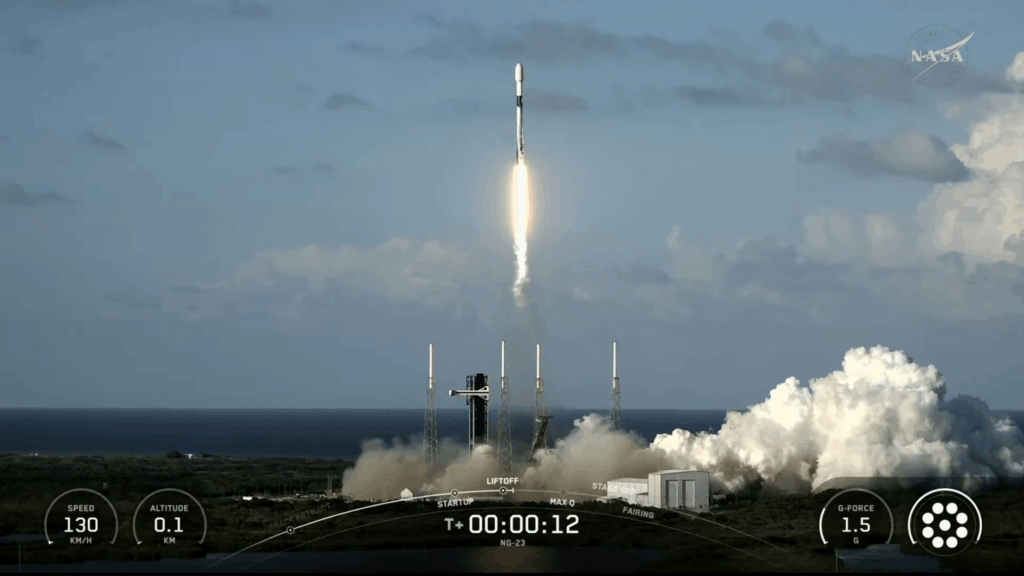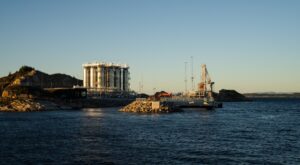
NASA has successfully launched a new wave of science experiments, technology demonstrations, and essential crew supplies to the International Space Station (ISS) with the Northrop Grumman Commercial Resupply Services 23 mission, known as Northrop Grumman CRS-23. The mission marks a significant milestone in NASA’s ongoing efforts to support scientific research and technological advancements in space.
The Cygnus XL spacecraft, carrying over 11,000 pounds of cargo, lifted off at 6:11 p.m. EDT on Sunday from Space Launch Complex 40 at Cape Canaveral Space Force Station in Florida. This launch utilized a SpaceX Falcon 9 rocket and represents the inaugural flight of the larger, more cargo-capable version of the solar-powered spacecraft.
Mission Details and Objectives
Cygnus XL is set to be captured by the Canadarm2 robotic arm at 6:35 a.m. on Wednesday, September 17. NASA astronaut Jonny Kim, with assistance from fellow astronaut Zena Cardman, will operate the arm to secure the spacecraft. Once captured, Cygnus XL will be attached to the Unity module’s Earth-facing port for unloading.
The mission is delivering a wide array of research experiments to be conducted during Expedition 73. These include materials for producing semiconductor crystals in microgravity and equipment aimed at enhancing cryogenic fuel tank technology. Additionally, the spacecraft is transporting a specialized UV light system designed to inhibit microbial growth in water systems, as well as supplies for producing pharmaceutical crystals that could potentially treat cancer and other diseases.
Scientific and Technological Implications
The experiments aboard Cygnus XL are a part of hundreds of scientific investigations conducted on the ISS, spanning fields such as biology, biotechnology, Earth and space science, and physical sciences. These initiatives are crucial for advancing technology development and demonstrations in space.
“For nearly 25 years, NASA has supported a continuous U.S. human presence aboard the orbiting laboratory, where astronauts have learned to live and work in space for extended periods of time.”
The space station serves as a vital platform for developing a low Earth orbit economy and is instrumental in NASA’s future exploration missions, including the Artemis missions to the Moon and potential astronaut missions to Mars.
Historical Context and Future Prospects
Since its inception, the ISS has been a cornerstone of international collaboration in space exploration. The ongoing resupply missions, such as Northrop Grumman CRS-23, play a pivotal role in sustaining this collaboration by providing the necessary resources and equipment for continued research and development.
According to NASA, the knowledge gained from these missions not only enhances our understanding of space but also contributes to technological innovations that can be applied on Earth. The development of semiconductor crystals and pharmaceutical advancements in microgravity, for instance, could lead to breakthroughs in various industries.
Upcoming Coverage and Public Engagement
NASA’s coverage of the arrival, capture, and installation of Cygnus XL will be broadcasted live, offering the public a chance to witness these critical operations. The schedule is as follows:
- Wednesday, Sept. 17
- 5 a.m. – Arrival coverage begins on NASA+, Amazon Prime, and more.
- 6:35 a.m. – Capture of Cygnus XL with the space station’s robotic arm.
- 8 a.m. – Installation coverage begins on NASA+, Amazon Prime, and more.
As NASA continues to push the boundaries of space exploration, missions like Northrop Grumman CRS-23 are crucial for paving the way for future endeavors. The ongoing research and technological advancements made possible by these missions are expected to have far-reaching impacts, both in space and on Earth.





